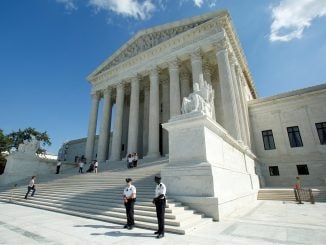
The headlines painted an alarming visual.
“Trump administration to house migrant children at Fort Sill, which once served as a Japanese internment camp” blared the headline from one national news media outlet.
Many others were worded similarly, whether in the headline or the story itself.
For the casual news reader, there was only one thing to glean from this information: The Trump administration is showing a callous disregard for vulnerable illegal immigrant children by shuttling them to internment camps.
Predictably, Democratic politicians were quick to pounce.
“This is sick,” tweeted California Governor Gavin Newsom. “We will look back at this moment in time and ask ourselves what we did to put a stop to these horrific, inhumane policies.”
“The internment of Japanese–Americans is a stain on our history,” said Sen. Bernie Senders (I-VT), a candidate for president. “[It’s] abhorrent that 75 years later, this administration now wants to hold migrant children in one of those same camps. We will look back on Trump’s racist child prisons as an abomination.”
There are a few problems with these hot takes, however.
For starters, the 150-year-old Oklahoma military base that will house the unaccompanied minor illegal immigrant children hasn’t been an internment camp … since June 1942. It is not going to be used as a “child prison.”
Secondly, this is only meant as a temporary solution. The Trump administration has a long-term plan to address the issue by way of building new Health and Human Services facilities due to overcrowding at existing facilities. But Democrats have refused to move on the administration’s request for $4.5 billion in funding for this plan, which would help alleviate the problem.
Thirdly, using Fort Sill to house unaccompanied migrant children is not a new practice. President Obama housed 1,200 of them there in 2014. In stark contrast to how current reports have been negatively framed, not a single media outlet that reported the news in 2014 noted it used to be an internment camp.
Not a single one.
Its brief history as an internment camp over 75 years ago has no relevance whatsoever to the reasons it is being used now.
So why was it so important to note last week that Fort Sill was a former Japanese internment camp but not in the 2014 stories?
There is simply no other logical reason for the differences in coverage other than to give people the worst possible impression of Trump’s immigration policies towards children.
It was media sensationalism at its worst, playing on people’s emotions. They insinuated the children were going to face the same conditions that the Japanese-Americans who were interned there did.
The media’s deliberate framing of this story would be like them reporting in the aftermath of a presidential election that “the president-elect will reside in a large white house that was built by slave labor.”
While it’s a fact and not wrong to mention it in historical context, where the president resides is beyond their control for the time they are the leaders of the free world. Furthermore, they had nothing to do with how the White House was built.
In 2018, the media used pictures of migrant children being kept behind chain link fences at detention facilities as supposed proof of the Trump administration’s lack of compassion for children at the border. They also circulated pictures of a “prison bus for babies” which showed a bus with child seats for toddlers.
The only problem with that narrative is that images were from 2014 and 2016 (and the bus was not a “prison bus”), obviously before Trump was president.
Do you detect a pattern here?
If the mainstream media truly want to earn back the trust they’ve lost they can start by doing better fact checking, showing a lot more consistency, and doing a lot less sensationalizing.
Stacey Matthews is a veteran blogger who has also written under the pseudonym Sister Toldjah and is a regular contributor to Red State and Legal Insurrection.



